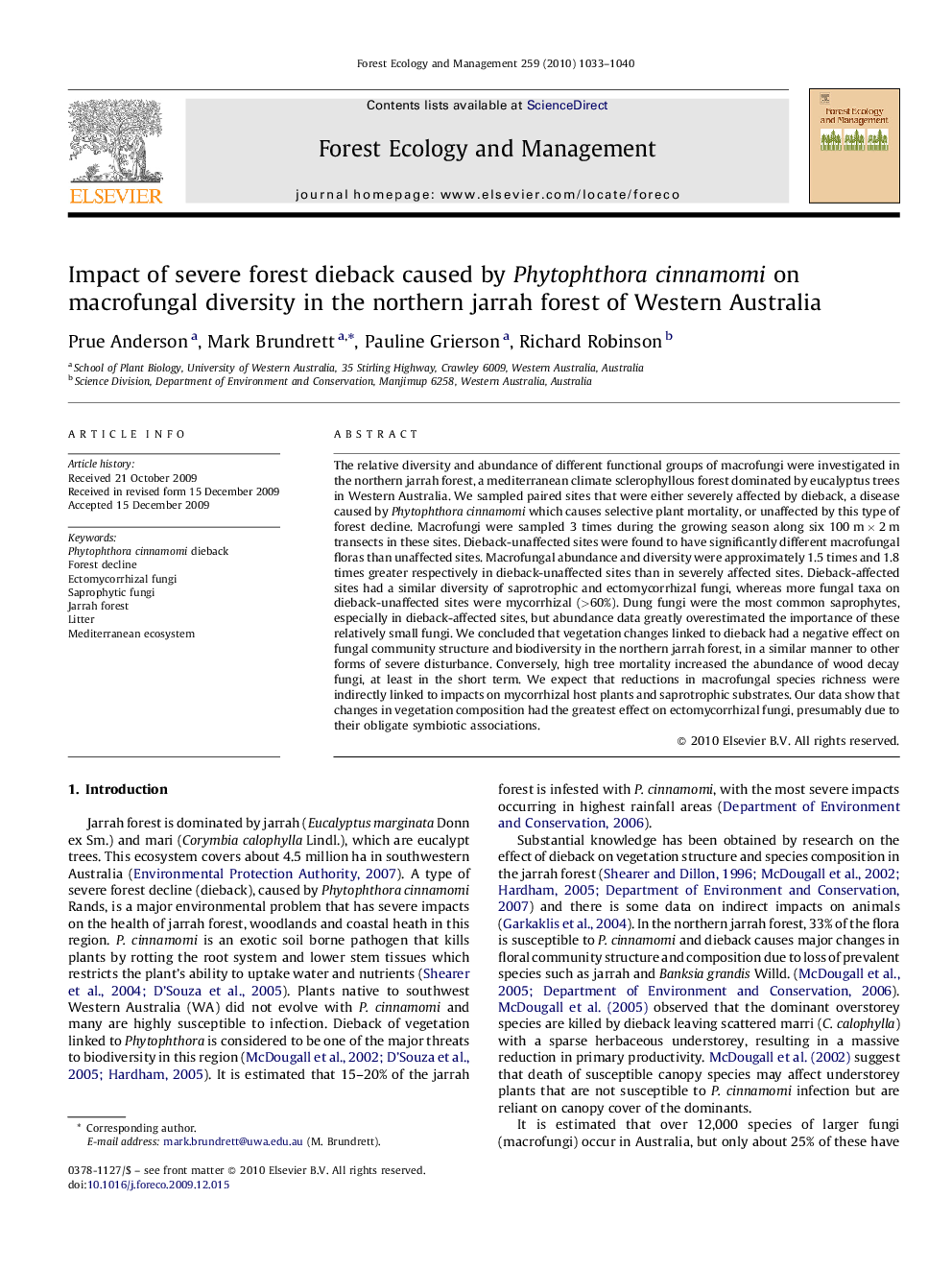| Article ID | Journal | Published Year | Pages | File Type |
|---|---|---|---|---|
| 88232 | Forest Ecology and Management | 2010 | 8 Pages |
The relative diversity and abundance of different functional groups of macrofungi were investigated in the northern jarrah forest, a mediterranean climate sclerophyllous forest dominated by eucalyptus trees in Western Australia. We sampled paired sites that were either severely affected by dieback, a disease caused by Phytophthora cinnamomi which causes selective plant mortality, or unaffected by this type of forest decline. Macrofungi were sampled 3 times during the growing season along six 100 m × 2 m transects in these sites. Dieback-unaffected sites were found to have significantly different macrofungal floras than unaffected sites. Macrofungal abundance and diversity were approximately 1.5 times and 1.8 times greater respectively in dieback-unaffected sites than in severely affected sites. Dieback-affected sites had a similar diversity of saprotrophic and ectomycorrhizal fungi, whereas more fungal taxa on dieback-unaffected sites were mycorrhizal (>60%). Dung fungi were the most common saprophytes, especially in dieback-affected sites, but abundance data greatly overestimated the importance of these relatively small fungi. We concluded that vegetation changes linked to dieback had a negative effect on fungal community structure and biodiversity in the northern jarrah forest, in a similar manner to other forms of severe disturbance. Conversely, high tree mortality increased the abundance of wood decay fungi, at least in the short term. We expect that reductions in macrofungal species richness were indirectly linked to impacts on mycorrhizal host plants and saprotrophic substrates. Our data show that changes in vegetation composition had the greatest effect on ectomycorrhizal fungi, presumably due to their obligate symbiotic associations.
